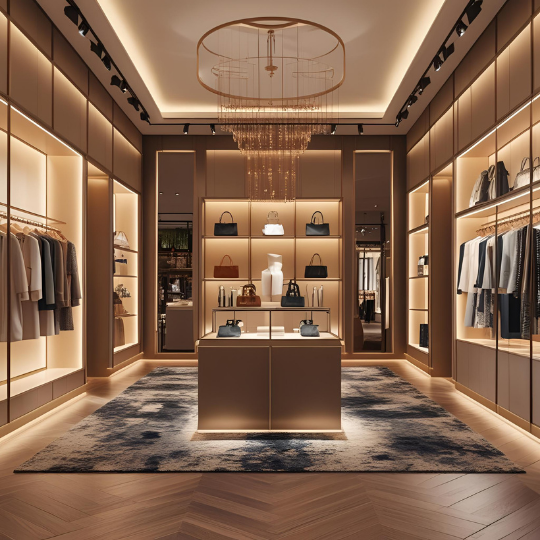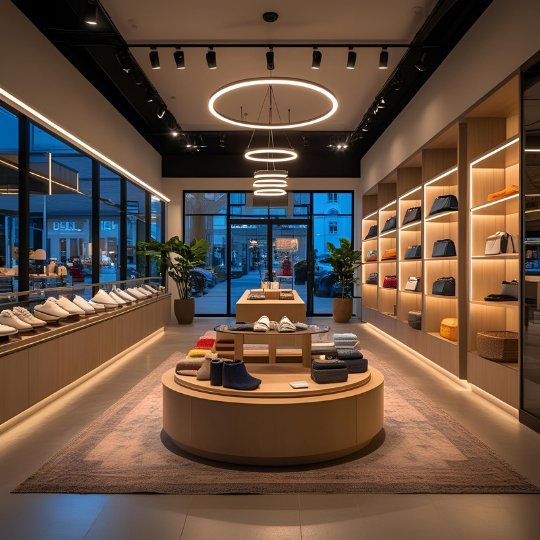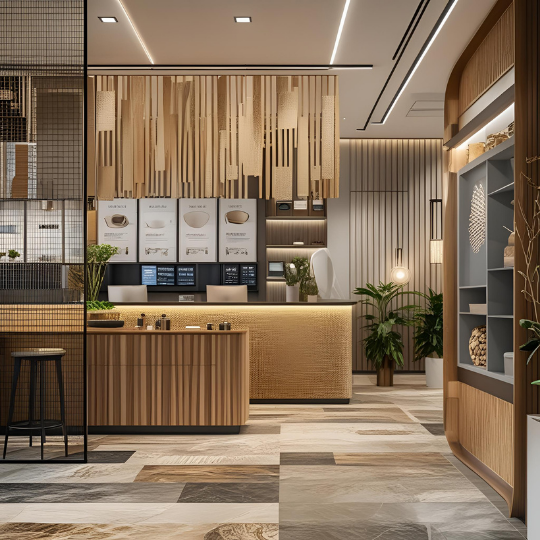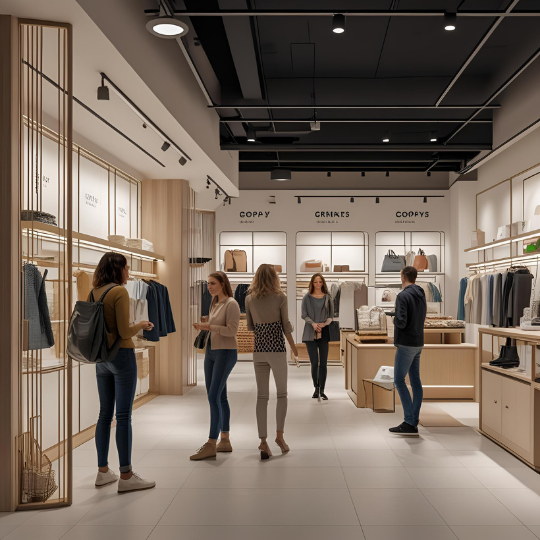When it comes to the psychology of retail design, it’s not just about how a store looks — it’s about how it makes people feel and behave. At Design by Artisan, we know that successful retail interiors are designed to influence customer behaviour, encourage exploration, and increase sales.
In this post, we explore the four key elements that shape the customer experience: layout, lighting, materiality and flow. Each plays a crucial role in the psychology behind how customers interact with your retail environment.
1. Layout and the Psychology of Movement

The layout of a store shapes the customer’s journey from the moment they walk in. It affects what they see, where they go, and how long they stay.
-
Zoning helps guide shoppers through product categories and create purposeful pauses.
-
Decompression zones near the entrance allow customers to adjust to the environment.
-
Power walls (the wall to the right upon entry) often capture the most attention.
Tip: A customer who stays longer is more likely to make a purchase. You can read more about retail layout strategies in this Forbes article on 20 Ways to Optimize Your Commercial Spacee For Success
2. Lighting and Mood in Retail Psychology

Lighting directly affects how customers perceive your brand and products.
-
Warm, ambient lighting creates a welcoming mood in boutique or lifestyle spaces.
-
Accent lighting draws focus to promotional displays or featured products.
-
Consistent lighting throughout a space helps maintain visual flow and comfort.
Research shows that lighting can influence shoppers’ emotional responses — one of the key elements in the psychology of retail design. Learn more from Prolight Design – The Ultimate Guide to Retail Lighting
3. Materiality: Telling Your Brand Story Through Texture

The materials and finishes in your store silently communicate quality, intention and brand values.
-
Natural textures like timber and linen evoke warmth, sustainability and calm.
-
Glossy or metallic finishes speak to innovation, boldness or luxury.
-
Tactile elements invite customers to touch and engage — increasing emotional connection.
A thoughtful materials palette supports both form and function, making your brand identity feel tangible and memorable.
4. Flow: Designing for Discovery and Ease

A seamless flow keeps shoppers comfortable and curious, helping them move naturally through your space.
-
Avoid tight corridors or visual clutter to prevent overwhelm.
-
Create points of interest at every turn to invite continued browsing.
-
Flexible display units allow for seasonal updates and layout refreshes.
A successful retail flow uses design psychology to reduce friction and build anticipation — both key drivers of purchase intent.
Why the Psychology of Retail Design Matters
Design isn’t just decoration. It’s strategy. By understanding the psychology of retail design, you can turn any space into an environment that speaks to your customers’ emotions and habits. At Design by Artisan, we work with business owners to create spaces that are not only beautiful, but also smart, effective and aligned with their brand goals.
Ready to Create a Space That Sells?
If you’re ready to apply the psychology of retail design to your space and boost customer engagement, we’d love to help.
Get in touch with Kylie Abbass, Senior Building and Interior Designer at Design by Artisan
📞 1300 388 158 | ✉️ enquiry@designbyartisan.com.au
